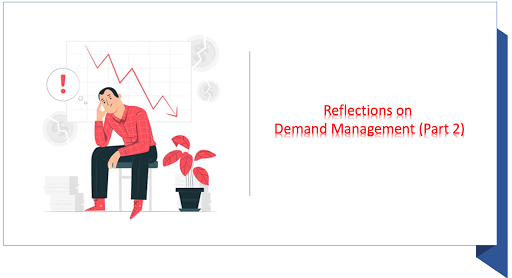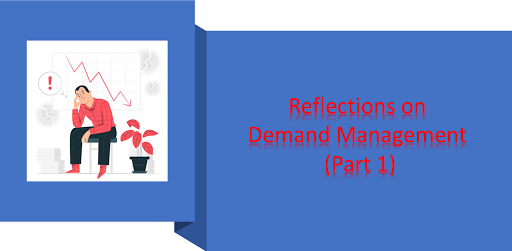What is the New Horizons for Resource Planning

Resource planning is changing fast, propelled by new technologies and behavioural trends.
First, we’ve seen an accelerated adoption of contactless engagement between customers and brands as a result of lockdown. McKinsey identified a leap from 32% to 55% growth in digital interactions between year-end 2019 and summer 2020.
This has stoked omnichannel growth, with many companies reporting leaps in customer use of social channels, chat, messaging and even video. Interestingly, the need to cater to a growing number of vulnerable customers has put paid to conventional wisdom that growth in digital implies a decline in voice. The need for heightened empathy has kept voice on the omnichannel team.
As a result, we are now rapidly moving into a world in which the volume of customer interaction is more evenly distributed across modalities.
So, what does this mean for resource planners?
Firstly, single-channel forecasting is less complex than multi-channel forecasting. So multi-channel forecasting takes longer to complete and can require additional contact relative to the greater effectiveness of omnichannel. This means productivity assumptions will need to be recalibrated based on your changing channel mix and contact centre platform capabilities.
Secondly, voice has always had queuing challenges as the default customer service channel. But now we’re also starting to see queues for other live assistance channels, such as web chat. So given this new phase of rapid digital adoption we’re in, what happens if social and chat capacity starts to choke? Industry colleagues tell me this is already an issue in some sectors. How much additional wait time should be built in as a result?
Thirdly, is historic data still the prime reference for generating new forecasts given these fast-evolving customer behaviours? Resource planners must now look forward and anticipate how rapidly their customer base is changing engagement preferences. Given this, who has this insight in the organisation? Is anyone even tracking it? If not, how do planners plug into external sources to keep up with these behavioural shifts?
Of the many questions that resource planners need answers to, here is just one minor example. Will digital adoption in older cohorts remain once we finally exit lockdown? Or will a lifetime habit of face-to-face engagement dampen this? High street research remains mixed on how this is going to play out. But deciphering this kind of behavioural trend illustrates how planners need to widen their sources of insight to keep their assumptions valid.
Making assumptions in a fast-changing world
Here are two more conundrums to consider when revising your contact mix going forward.

As smarter forms of self-service come on stream and help attune customers to more convenient ways of getting things done, will chat and messaging conversations grow in complexity and length as we have already seen with live voice interactions? If so, what will that do to productivity assumptions?
Probably it is more important to try and assess how fast self-service is going to ramp up. I already know of one UK retail brand that has succeeded in turning a bot into their highest volume interaction channel. While uncommon right now, this is evidence of the changing mix between live assistance and self-service.
And while we’re on the topic of evolving contact mixes, what of the future growth in proactive service? This is all about tuning AI-powered algorithms to identify patterns of customer demand in service and sales journeys. This means we can inform customers about issues before they’re even aware of them. Using this predictive power, some banks are already impressively good at letting us know in near real time that we have just been protected from attempted fraud.
Greater complexity. But resource planning gets smarter
This kind of real-time understanding of customer needs is a game changer for everyone: customers, customer-facing teams and support functions, such as resource planning. Real-time insight is now driving a wide array of next best actions. Every building block of contact centre functionality is being infused with this kind of intelligent responsiveness. Planners benefit as much as others in having ever greater volumes of operational data transformed and simplified into next best actions and alerts.
While technology will enable resource planning teams to stay on top of an increasingly complex and shifting pattern of demand, they will also need to review their role and ways of working to remain effective.
Here are three areas to explore in those discussions:
- How do resource planners develop a broader understanding of customer and employee trends? For instance, as the next phase of hybrid working takes shape, there is still much to be discussed as options are negotiated between employer and employees. How will this impact planning assumptions and forecasts?
- How do resource planners become more closely involved in key management decisions? Cross-functional teamwork has been the answer in many organisations. Is this a way forward to help resource planners develop a broader perspective on how the organisation is responding to new customer and employee trends?
- What are the upskilling challenges? How do other industries model uncertainty and volatility and what can be learnt from them? Are some elements of data science relevant? Is it important to understand how AI-generated predictions work? Should resource planners learn how to leverage real-time insights to make new types of resourcing decisions? Does it help to have a deeper understanding of the organisation’s CX goals? Or should planners understand the evolutionary path that live assistance is now on, given the growing impact of self-service, automation and proactive service?
About the author
Martin Hill-Wilson was CEO of one of the first BPOs and CX consultancies in the UK. He then spent a decade in the systems integration industry positioning the value of new technology and the associated change agenda. He is now in his tenth year as Brainfood Consulting






Responses